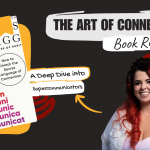You’ll also sell your homes faster and for more money than most other agents, and have a distinct advantage capturing listings. You will be in the “elite of the elite” when it comes to home marketing.
But it’s likely you won’t answer “yes,” because statistics say that less than 1 out of 200 agents truly understand how to market and sell homes like a world-class pro.
The good news is that’s all about to change, because today I’m going to show you an amazing example of home marketing, plus give you a simple 5-Step process for writing ads, brochures, web pages and more – the easy way.
A few weeks ago a good “direct marketing” friend of mine in Austin, TX called me because he needed to sell one of his homes and met an agent who gave him a series of ads as part of his pre-listing package.
You can see one of his ads as a .pdf by clicking here.
What was so amazing to my friend (and, of course me) is that this agent combined long-style, emotional direct response copy with absolutely stunning layout, making his home truly unique and irresistible to potential buyers.
My friend questioned the agent, Stan Barron, about his remarkable ads, who said that for years he had studied direct response advertising and honed his skills to the point where all his marketing is heads and tails more successful than any other agent in the area.
To the untrained eye, you might think that his ads are simply beautiful photos with verbose descriptions. After all, who would read all that print??
But the pro realizes that to capture interest and stimulate desire in a potential home prospect, you need to tell your complete story and use certain “strategies” to convert the prospect to a paycheck-cashing client.
A buyer not interested in the home won’t read 5 words about it, but an interested prospect wants as much information as you can provide. So give it to them.
Would you like to learn these strategies, so you can differentiate yourself and your homes from other agents, and (quite literally) multiply your income?
I thought you might, so here are 5 simple steps for creating blockbuster homes ads (and all your marketing) in your business.
Open and/or print the ad in the link above, as I’m going to use it as an example of brilliant marketing…
Quite frankly, the reason why some agents are great marketers is because they simply do their homework. The secret is to be efficient at the process by knowing what questions to ask and having a keen sense of observation.
And, by the way, if you think this exercise only applies to multi-million-dollar luxury homes, think again. You should do the very same exercise with a production tract home.
So the first step is to identify unique features and benefits about the home you’re looking at. Now, when I say unique, I’m talking about very specific and captivating features and benefits that clearly stand-out and appeal to a potential buyer.
Not every home appeals to everyone, so you also need to identify who would be the perfect buyer for the home, given the features and benefits you discover. The process involves asking questions in 4 areas…
**The owners: Who are they? Why did they buy/build this particular home? Do they have any quirks that are reflected in this home? What do they do for a living? What are their hobbies or passions? Do they have special needs that are reflected in the home? What was the owners dream for the property and how did they accomplish it?
You’ll notice in the ad that the agent identified certain things about the owners, like he’s a Ferrari driver, must love cars because of his 5-car garages, and he’s a bit of a high-tech recluse who really wanted privacy.
**The history of the property and details about the area, land or subdivision: How did the owners find the land/home? Who owned the land/home before the current buyers? Are there interesting historical landmarks nearby or on the land?
You’ll notice in this ad the agent discovered that the home is set on a double lot at the end of a dead-end street, and appears to have grown out of its natural surroundings. He then adds that the property sits on the edge of a vast wilderness and protected wildlife habitat.
Do you think this is going to appeal to someone interested in very private, open and protected spaces? You better believe it!
**Architecture, design and construction details: What is so unique about the design of the home? What unique materials were used in construction? Are there special features and benefits about the design that might appeal to a certain buyer?
**Lifestyle benefits of the home: What is the best use for this home? How did the current owners use it? Is it a party home or is it a great refuge from modern busy life?
People buy a house, but it’s their emotions that turn it into a “home.” Try to identify the emotional attachment the current owners have to the home.
The purpose of your headline is to 1) Attract attention from the right kind of buyer, 2) Communicate the most unique features and/or benefits of the home, and 3) Most importantly, cause the reader to want to read the ad.
So in reality, the headline is the “ad” for the ad.
Here’s how you craft your headline: Take all the interesting details you discovered from Step #1 above and select 2 or 3 of the most unique and valuable details to craft your headline around.
Remember, you need to first get a bead on the type of buyer who would be interested in the home – then select the 2 or 3 details that would most appeal to that specific buyer. Remember, we’re talking target marketing, not mass marketing.
Next, write 15 or 20 (or more) captivating headlines. Since the headline accounts for at least 85% of the success of your ad, spend at least 85% of your time on the headline.
In our example, Stan used something about his seller, then talked about the privacy and space of the home. He identified these as the most important facts and features about the home.
Now, you’ll notice there’s a sub-headline, or what I call “Deck Copy.” Your deck copy can be used to add-on to your headline in order to stimulate even more desire to read your ad, brochure, home flyer, etc.
In this case, Stan further focused on the private setting, exotic pool and guest house – and really hit home with the 3-sides of greenbelt. He also decided to include the price in the deck copy as it helps to qualify the buyer.
Your lead, or opening sentence/paragraph, is almost important as your headline. The purpose of your first sentence is to simply motivate the reader to read your second sentence, and so forth.
It sounds obvious, doesn’t it? But if your reader stops reading at any time, you’ve lost a potential prospect for the home (or to help find a home).
So the goal of your lead is to say something that will motivate your reader to read on. In this case, Stan opens his ad with an excitement sentence (surge into the “red zone”).
He then focuses on the 3 most important features/benefits of the home: 1) close to town, 2) dazzling architecture, and 3) privacy.
Is this starting to make sense to you?
You’ve captured the reader’s interest with your headline and deck copy. You’ve further heightened it with your lead. Now it’s time to really dig into their emotions with the body copy.
Read how Stan brilliantly describes the features and lifestyle benefits of this home. He even talks about what the home would look like if viewed from a helicopter, and he talks about how the owner spent heavily to “orchestrate” the residence.
Why is he doing this?
Because he wants to reveal the UNIQUENESS and VALUE of the home. People naturally gravitate to things that are unique, one-of-a-kind or dwindling in supply. It’s how you tap-into and agitate human desire.
You can see that he writes his body copy as if you were taking a walking tour through the property, and he uses very emotional descriptions and details of the home – these are all the items he discovered during his detective work in Step #1 above.
Over my 34-year career I’ve seen thousands of examples of agent marketing. And in practically every case the single most important (yet MISSING) ingredient is a solid call to action.
Remember this: NO ONE will ever respond to your marketing without a specific, meaningful, self-serving and irresistible REASON for doing so.
No call to action, no response – you’ve wasted your money and time.
Aside from advertising in the wrong mediums, this is the single biggest reason why 95% of most agent marketing turns out to be money flushed down the drain.
If you look at this ad, on page 2, you’ll notice Stan has a sub-headline that says, “How to See This Home.”
Then he does something I think is brilliant: He qualifies potential buyers. Why is he doing this?
Actually for 2 reasons, I believe: 1) Because there really are conditions to seeing this home, probably rightly placed by his sellers, and 2) Because creating a qualifier, or “take-away” actually makes a potential buyer more desirous to take the next step – as you just learned, people want things that are dwindling in supply or hard to get.
So Stan tells the reader, “no casual lookers” and asks the potential buyer to contact their own agent to set an appointment (he also knows that, if they don’t have an agent, they will call him directly).
He then gives his phone number and web site address where people can view more about the home.
The only thing I would add to the close would be a few more reasons to visit his web site: Perhaps Free consumer reports, an exclusive home buying program, etc.
Other than that, you’re looking at one of the very best ads I’ve ever seen for marketing a home, and you can create ads just like this if you simply follow the 5-Steps above and look at this example.
One additional thing worth mentioning: Did you notice that every photo of Stan’s ads uses a caption?
Why does he do this? Because photos naturally draw the eye, and having a caption helps relate a benefit or highlight a feature and DRIVE the reader into the copy.
Oh…I almost forgot: Want to see another one of Stan’s ads?
OK, then Click Here and you’ll see another ad example – this one uses a great qualifier right in the headline. Study it right now, and start creating great advertising for your listings.
Now, I want to give special THANKS to Stan Barron for allowing me to use his incredible ads as a marketing lesson.
By the way: If you have any referrals for the Austin area, feel free to give Stan a call – your clients will thank you for introducing him.
AND…if you’d like to learn more about the elements and strategies for direct response success (these will change our life and income almost on the spot!), here are a few books you should buy and DEVOUR (don’t worry, they’re inexpensive and can be found on Amazon.com):
** Advertising Secrets of the Written Word – by Joe Sugarman
** Scientific Advertising – by Claude Hopkins
** Breakthrough Advertising – by Eugene Schwartz
** Anything by John Caples
** The Robert Collier Letter Book – Robert Collier (use Google to find a copy from Carl Galletti)
I have hundreds of books in my library, but these 5 will give you enough information to turn you into a marketing and copywriting expert in no-time flat – and that means lots more money in your pocket. Happy marketing!
| What are you doing to make your listings stand out and sell quickly?Learn how to use Stan Barron’s approach to sell homes fast in your area by clicking here for a short video presentation. |







